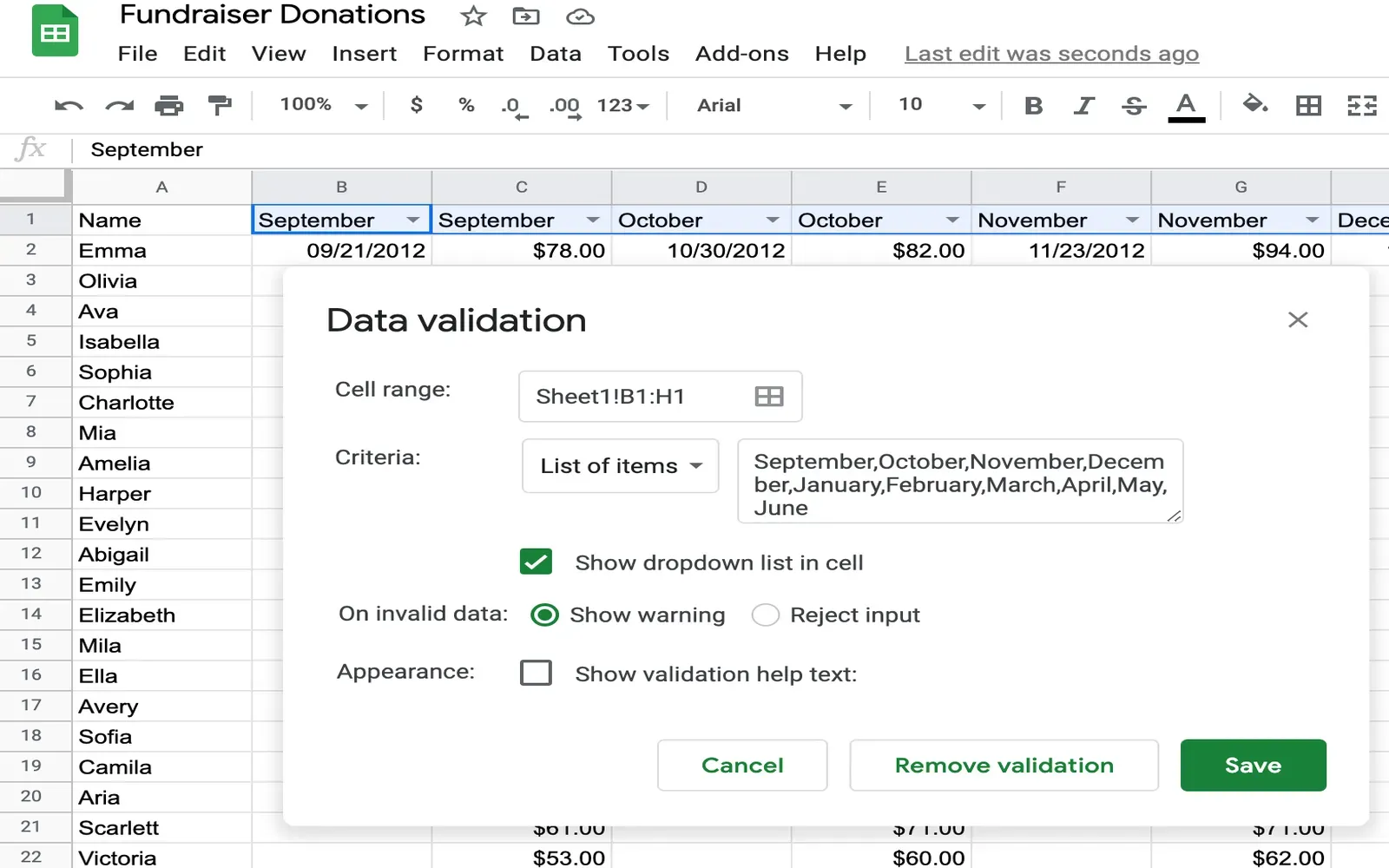Data validation in Google Sheets is a powerful feature that allows users to control the type of data entered into a cell or range of cells. By implementing data validation, you can ensure the integrity and accuracy of your data, making it easier to analyze and work with. This feature is particularly useful in collaborative environments where multiple users input data into shared sheets. In this article, we will explore the different aspects of data validation, including its types, applications, and how it can enhance your Google Sheets experience.
Types of Data Validation
Data validation in Google Sheets comes in various forms, allowing users to set specific criteria for data entry. Here are the most common types of data validation:
- List of Items: This option allows you to create a dropdown list from which users can select a value. It's particularly useful for standardizing entries and ensuring consistency.
- Number: You can restrict entries to numerical values, setting conditions such as greater than, less than, or between specific numbers.
- Date: This validation type ensures that only valid dates can be entered, with options to specify a range of acceptable dates.
- Text Length: You can limit the number of characters that can be entered into a cell, which is especially useful for fields like usernames or product codes.
- Custom Formula: For advanced users, Google Sheets allows the use of custom formulas to set complex validation rules that can meet specific needs.
How to Set Up Data Validation
Setting up data validation in Google Sheets is straightforward. Follow these steps to implement this feature:
- Select the cell or range of cells where you want to apply data validation.
- Click on the Data menu at the top of the screen.
- Select Data validation from the dropdown options.
- In the data validation dialog, choose the criteria you want to apply (e.g., list, number, date).
- If applicable, configure any additional settings, such as input messages or error alerts.
- Click Save to apply the validation rules.
This simple process can help streamline your data entry and maintain high standards of data quality.
Applications of Data Validation
Data validation is not just a tool for preventing errors; it has various applications that can significantly improve your workflow. Here are some common use cases:
- Form Creation: When designing forms or surveys in Google Sheets, data validation can ensure that respondents provide answers in the correct format, improving the quality of the data collected.
- Inventory Management: For businesses tracking inventory, data validation can help maintain accurate records by restricting entries to predefined items, preventing mistakes in stock management.
- Project Management: In project tracking sheets, you can use data validation to enforce status updates with dropdown lists, ensuring that team members select from established options.
- Financial Tracking: When managing budgets or financial records, data validation can ensure that only valid financial data is entered, reducing discrepancies in reports.
Benefits of Using Data Validation
Incorporating data validation into your Google Sheets can offer multiple benefits:
- Improved Data Accuracy: By controlling what can be entered into cells, you reduce the chances of human error, leading to more reliable data.
- Enhanced User Experience: Dropdown lists and clear error messages create a more user-friendly experience, particularly for users unfamiliar with the data requirements.
- Time Savings: By preventing incorrect data entry, you save time spent on correcting errors and cleaning up data later.
- Better Collaboration: In shared sheets, data validation ensures that all users adhere to the same standards, making it easier to collaborate effectively.
Conclusion
Data validation in Google Sheets is an essential tool for maintaining data integrity and enhancing productivity. By understanding the different types of data validation, how to set it up, and its applications, you can significantly improve your data management processes. Whether you are creating forms, managing inventories, or tracking projects, implementing data validation ensures that the data entered is valid, consistent, and reliable. Start using data validation today and experience the benefits it brings to your Google Sheets experience.
In summary, data validation not only helps maintain the quality of your data but also enhances the overall functionality of your spreadsheets. As you delve deeper into Google Sheets, consider exploring more advanced features like conditional formatting and formulas, which can further complement your data validation efforts.





